Spiral Thermal Plumes in Water under Conventional Heating: Numerical Results on the Effect of Rotation
Abstract
1. Introduction
2. Mathematical Model
Numerical Implementation
3. Results and Discussion
3.1. State-Character Depending on
3.2. Effect of in the Temperature Profile and Velocity Flow
4. Conclusions
Author Contributions
Funding
Data Availability Statement
Conflicts of Interest
References
- Bodenschatz, E.; Pesch, W.; Ahlers, G. Recent developments in Rayleigh-Benard convection. Annu. Rev. Fluid Mech. 2000, 32, 709–778. [Google Scholar] [CrossRef]
- Rudiger, S.; Feudel, F. Pattern formation in Rayleigh-Benard convection in a cylindrical container. Phys. Rev. E 2000, 62, 4927–4931. [Google Scholar] [CrossRef] [PubMed]
- Glatzmaier, G.A.; Coe, R.S.; Hongre, L.; Roberts, P.H. The role of the Earth’s mantle in controlling the frequency of geomagnetic reversals. Nature 1999, 401, 885–890. [Google Scholar] [CrossRef]
- Jones, C.A. Convection-driven geodynamo models. Philos. Trans. R. Soc. Lond. 2000, A358, 873–897. [Google Scholar] [CrossRef][Green Version]
- Heimpel, M.; Aurnou, J. Turbulent convection in rapidly rotating spherical shells: A model for equatorial and high latitude jets on Jupiter and Saturn. Icarus 2007, 187, 540–557. [Google Scholar] [CrossRef]
- Ingersoll, A.P. Atmospheric dynamics of the outer planets. Science 1990, 248, 308–316. [Google Scholar] [CrossRef]
- Dunn, M.G. Convective heat transfer and aerodynamics in axial flow turbines. J. Turbomach. 2001, 123, 637–686. [Google Scholar] [CrossRef]
- Johnston, J.P. Effects of system rotation on turbulence structure: A review relevant to turbomachinery flows. Int. J. Rot. Mach. 1998, 4, 97–112. [Google Scholar] [CrossRef]
- Vorobieff, P.; Ecke, R.E. Turbulent rotating convection: An experimental study. J. Fluid Mech. 2002, 458, 191–218. [Google Scholar] [CrossRef]
- Kunnen, R.P.J.; Geurts, B.J.; Clercx, H.J.H. Experimental and numerical investigation of turbulent convection in a rotating cylinder. J. Fluid Mech. 2010, 642, 445–476. [Google Scholar] [CrossRef]
- Kunnen, R.P.J.; Corre, Y.; Clercx, H.J.H. Vortex plume distribution in confined turbulent rotating convection. Europhys. Lett. 2014, 104, 54002. [Google Scholar] [CrossRef][Green Version]
- Lopez, J.M.; Marques, F. Instabilities of plumes driven by localized heating. J. Fluid Mech. 2013, 736, 616–640. [Google Scholar] [CrossRef]
- Navarro, M.C.; Castaño, D.; Herrero, H. Thermoconvective instabilities to explain the main characteristics of a dust devil-like vortex. Physica D 2015, 308, 109–115. [Google Scholar] [CrossRef]
- Devienne, R.; Fontaine, J.-R. Thermal plumes above hot sources: Characterization and capture efficiency. Mech. Ind. 2016, 17, 609. [Google Scholar] [CrossRef]
- Turner, J.S. Buoyant plumes and thermals. Annu. Rev. Fluid Mech. 1969, 1, 29–44. [Google Scholar] [CrossRef]
- Fay, J.A. Buoyant plumes and wakes. Annu. Rev. Fluid Mech. 1973, 5, 151–160. [Google Scholar] [CrossRef]
- List, E.J. Turbulent jets and plumes. Annu. Rev. Fluid Mech. 1982, 14, 189–212. [Google Scholar] [CrossRef]
- Woods, A.W. Turbulent plumes in nature. Annu. Rev. Fluid Mech. 2010, 42, 391–412. [Google Scholar] [CrossRef]
- Griffiths, R.W.; Campbell, I.H. Stirring and structure in mantle starting plumes. Earth. Planet Sci. Lett. 1990, 99, 66–78. [Google Scholar] [CrossRef]
- Kumagai, I. On the anatomy of mantle plumes: Effect of the viscosity ratio on entrainment and stirring. Earth Planet Sci. Lett. 2002, 198, 211–224. [Google Scholar] [CrossRef]
- Pham, M.V.; Plourde, F.; Kim, S.D. Three-dimensional characterization of a pure thermal plume. Heat Transf. 2005, 127, 624–636. [Google Scholar] [CrossRef]
- Plourde, F.; Pham, M.V.; Kim, S.D.; Balachandar, S. Direct numerical simulation of a rapidly expanding thermal plume: Structure and entrainment interaction. J. Fluid Mech. 2008, 604, 99–123. [Google Scholar] [CrossRef]
- Zhou, Q.; Xia, K. Physical and geometrical properties of thermal plumes in turbulent Rayleigh-Bénard convection. New J. Phys. 2010, 12, 075006. [Google Scholar] [CrossRef]
- Navarro, M.C.; Castaño, D.; Herrero, H. Thermal plumes in water under conventional heating: In silico experiments. Int. Commun. Heat Mass Transf. 2020, 119, 104946. [Google Scholar] [CrossRef]
- Cagney, N.; Newsome, W.H.; Bertelloni, C.L.; Cotel, A.; Hart, S.R.; Whitehead, J.A. Temperature and velocity measurements of a rising thermal plume. Geoche. Geophys. Ceosyst. 2015, 16, 579–599. [Google Scholar] [CrossRef]
- Khrapunov, E.; Chumakov, Y. Structure of the natural convective flow above to the horizontal surface with localized heating. Int. J. Heat Mass Transf. 2020, 152, 119492. [Google Scholar] [CrossRef]
- Rossby, H.T. A study of Bénard convection with and without rotation. J. Fluid Mech. 1969, 36, 309–335. [Google Scholar] [CrossRef]
- Navarro, M.C.; Diaz-Ortiz, A.; Prieto, P.; de la Hoz, A. A Spectral Numerical Model and an Experimental Investigation on Radial Microwave Irradiation of Water an Ethanol in a Cylindrical Vessel. Appl. Math. Model. 2019, 66, 680–694. [Google Scholar] [CrossRef]
- Batchelor, C.K. An Introduction to Fluid Dynamics; Cambridge University Press: Cambridge, UK, 1967. [Google Scholar]
- Chandrasekar, S. Hydrodynamic and Hydromagnetic Stability; Dover Publications: New York, NY, USA, 1981. [Google Scholar]
- Mercader, I.; Batiste, O.; Alonso, A. An efficient spectral code for incompressible flows in cylindrical geometries. Comput. Fluids 2010, 73, 215–224. [Google Scholar] [CrossRef]
- Castaño, D.; Navarro, M.C.; Herrero, H. Double vortices and single-eyed vortices in a rotating cylinder under thermal gradients. Comp. Math. Appl. 2017, 73, 2238–2257. [Google Scholar] [CrossRef]
- Faghri, A.; Zhang, Y. Advanced Heat and Mass Transfer; Global Digital Press: Columbia, MO, USA, 2010. [Google Scholar]
- Vargaftik, N.B. Handbook of Physical Properties of Liquids and Gases; Hemisphere: New York, NY, USA, 1975. [Google Scholar]
- Kondrashov, A.; Sboev, O.; Dunaev, P. Heater shape effects on thermal plume formation. Int. J. Therm. Sci. 2017, 122, 85–91. [Google Scholar] [CrossRef]
- Zhong, F.; Ecke, R.E.; Steinberg, V. Rotating Rayleigh-Bénard convection: Asymmetric modes and vortex states. J. Fluid Mech. 1993, 249, 135–159. [Google Scholar] [CrossRef]
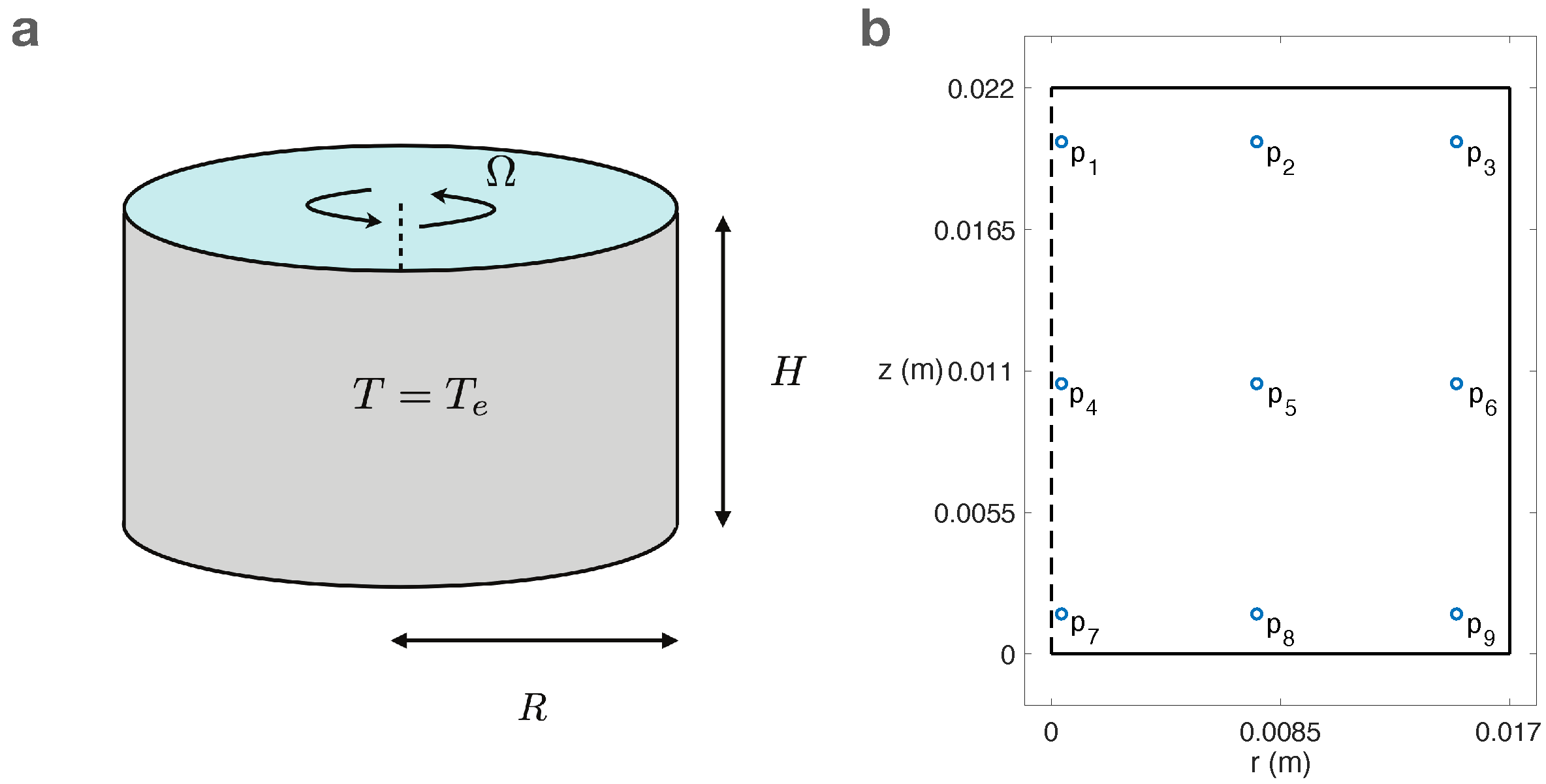

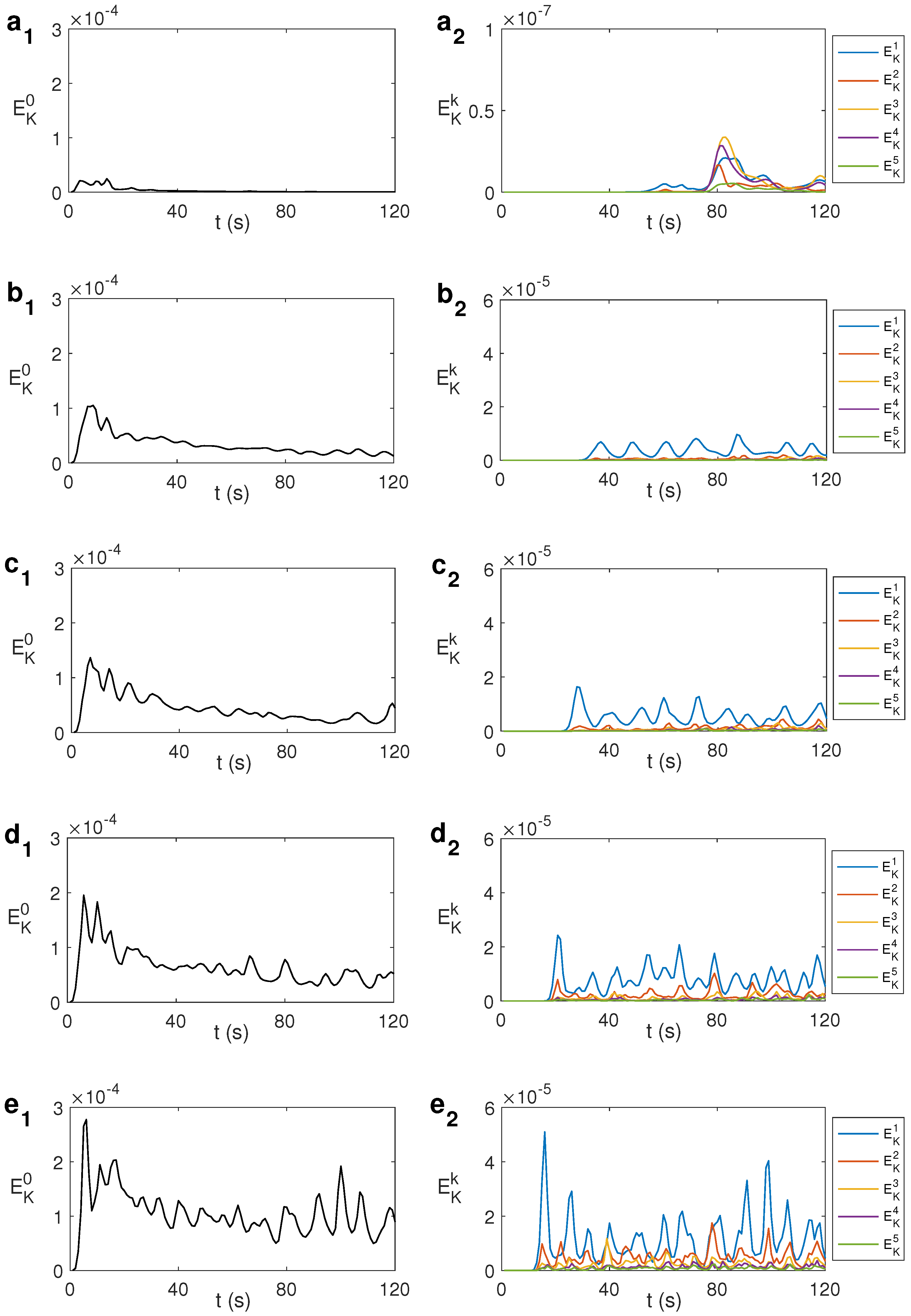
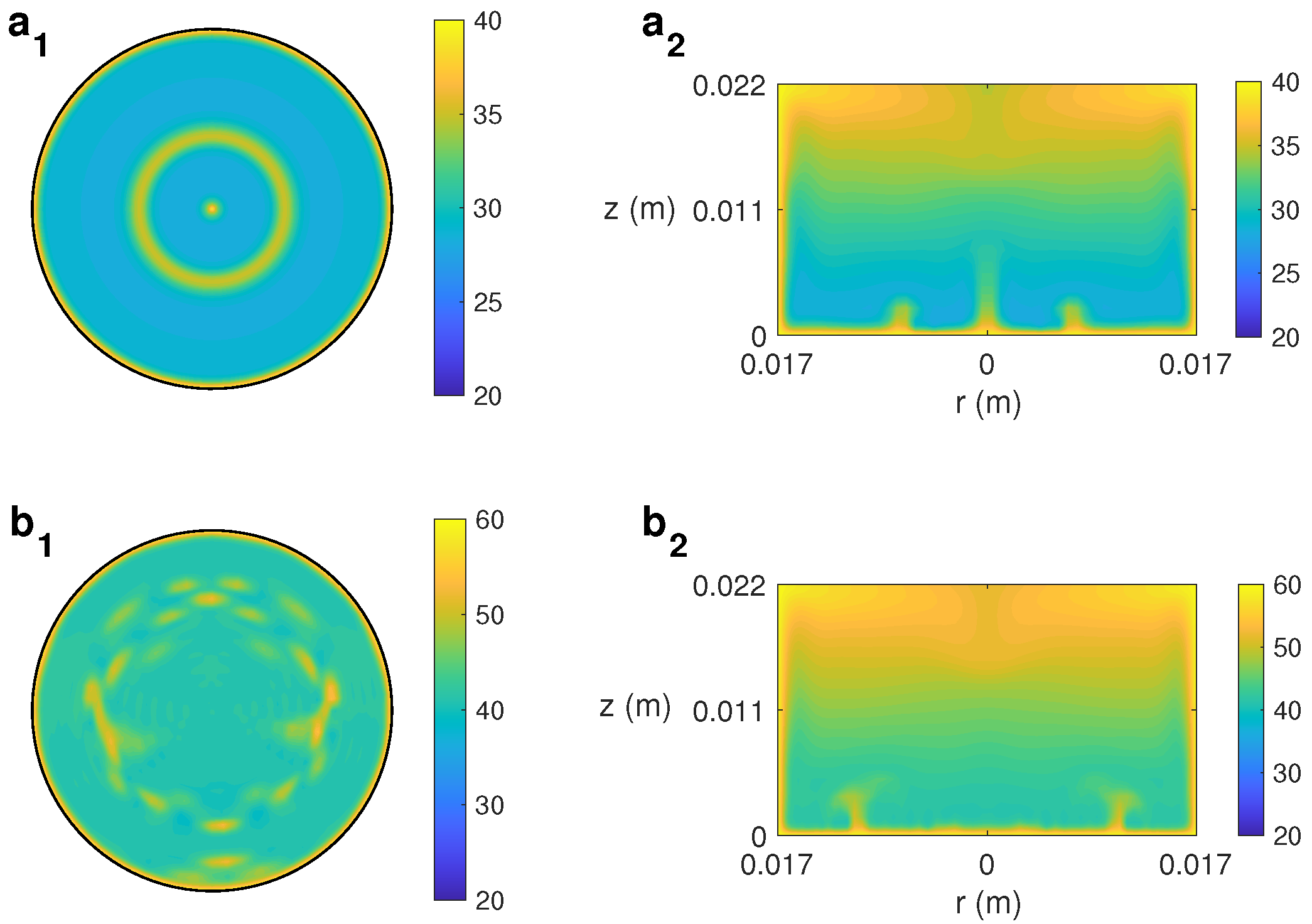
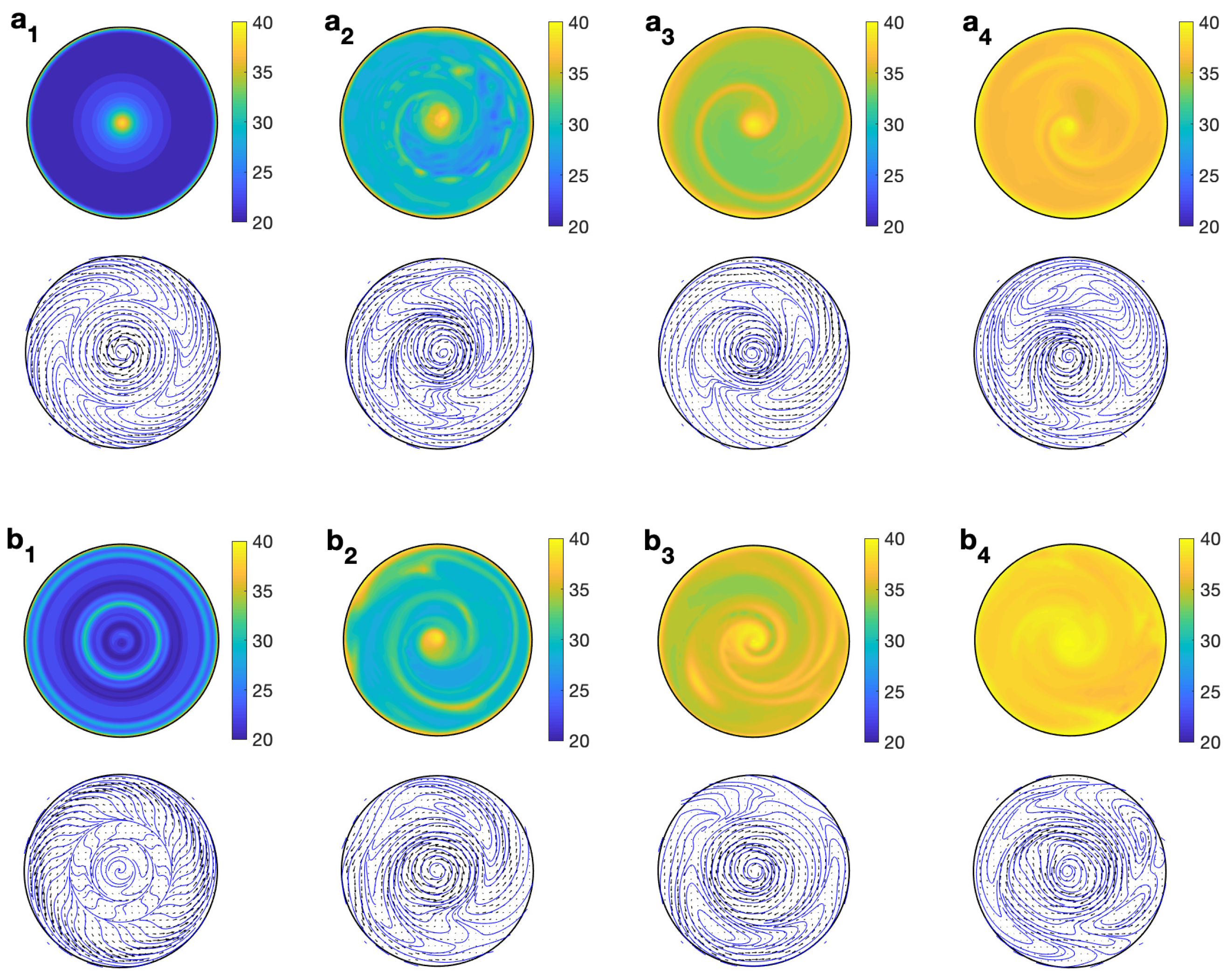
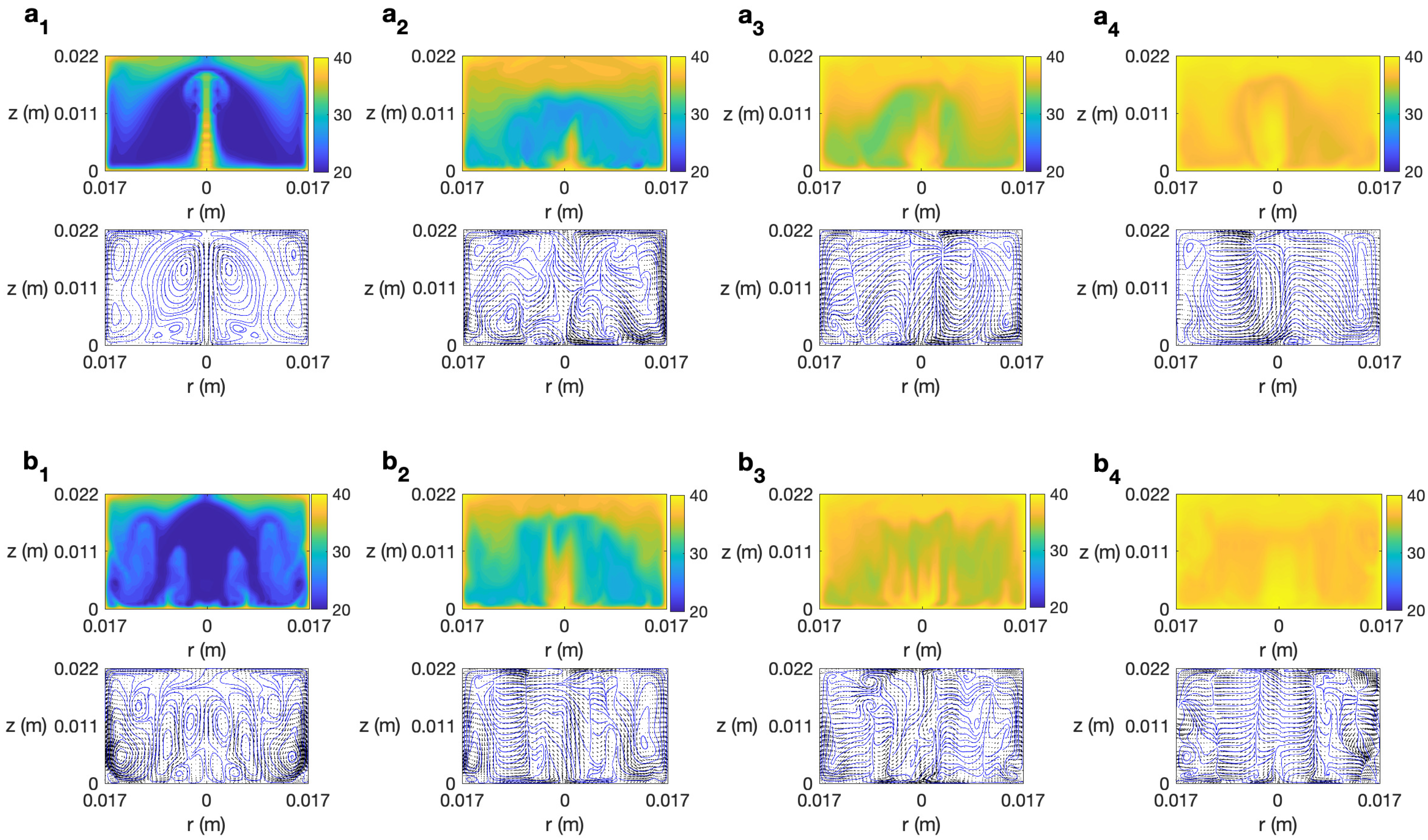
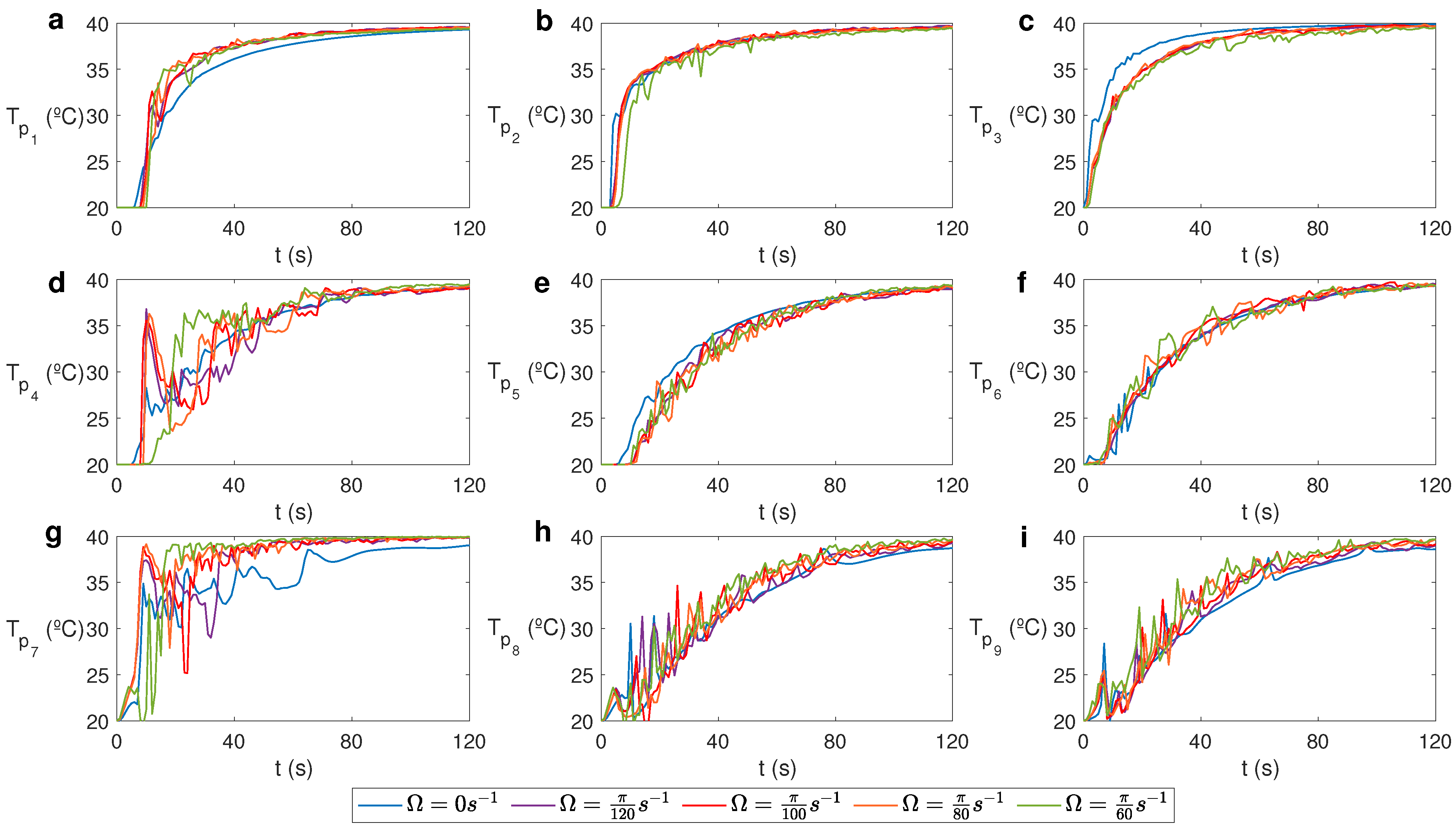
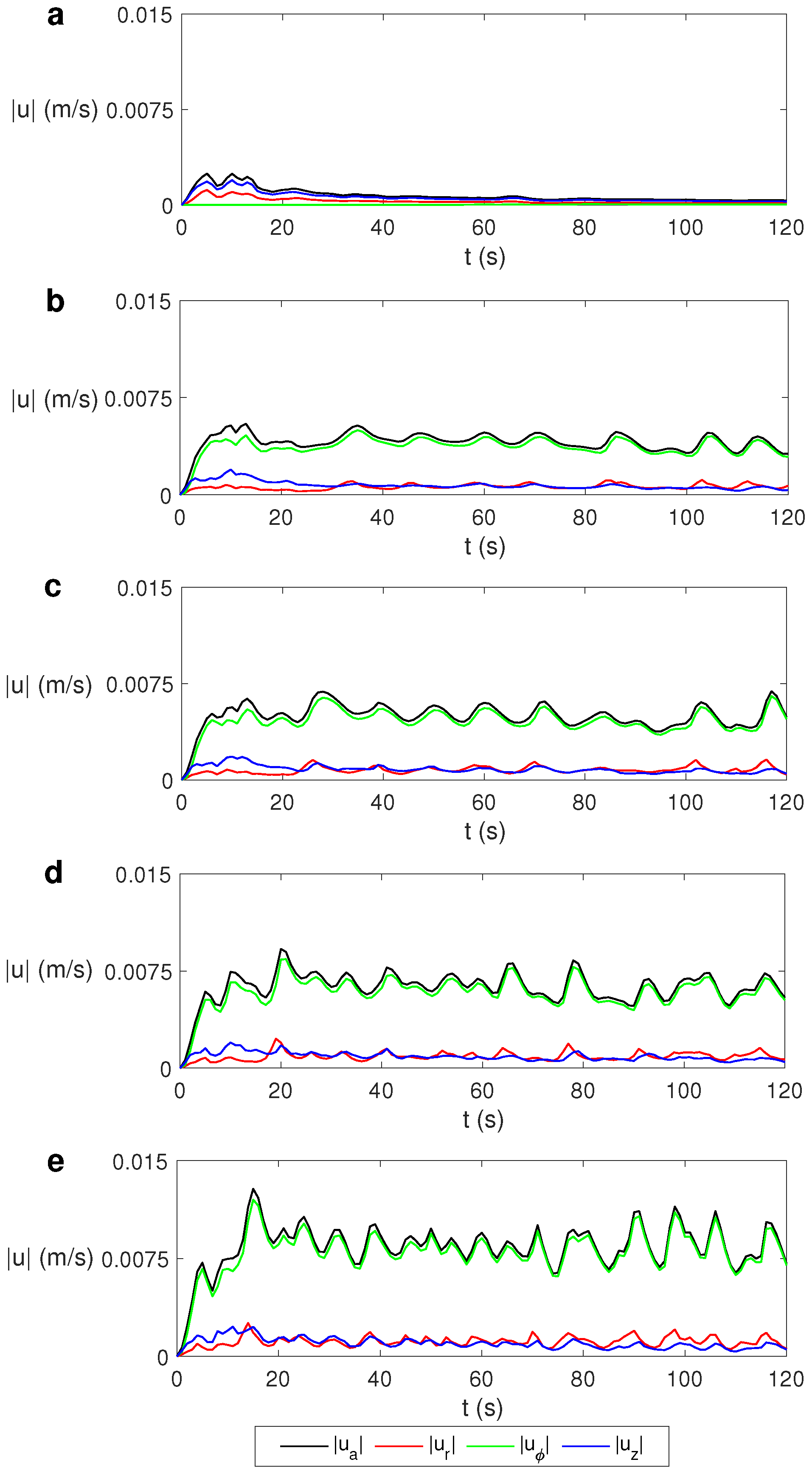
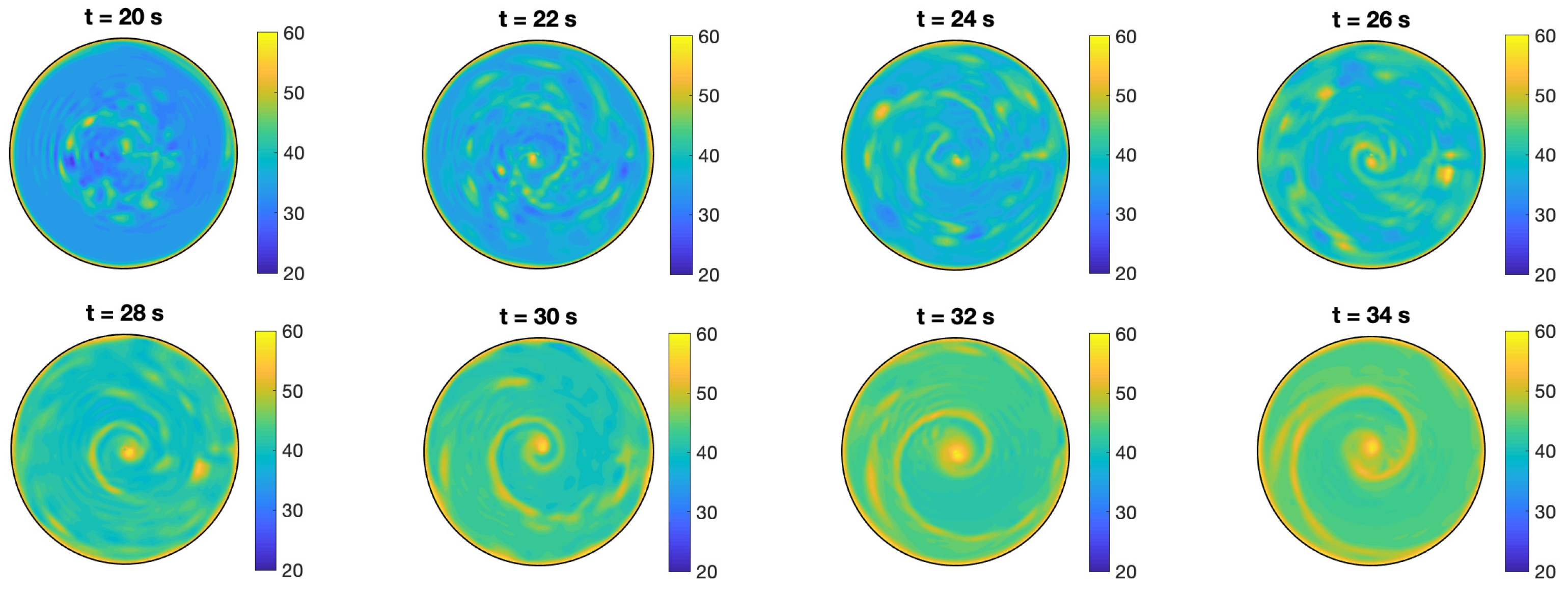
Publisher’s Note: MDPI stays neutral with regard to jurisdictional claims in published maps and institutional affiliations. |
© 2022 by the authors. Licensee MDPI, Basel, Switzerland. This article is an open access article distributed under the terms and conditions of the Creative Commons Attribution (CC BY) license (https://creativecommons.org/licenses/by/4.0/).
Share and Cite
Navarro, M.C.; Castaño, D.; Herrero, H. Spiral Thermal Plumes in Water under Conventional Heating: Numerical Results on the Effect of Rotation. Mathematics 2022, 10, 1052. https://doi.org/10.3390/math10071052
Navarro MC, Castaño D, Herrero H. Spiral Thermal Plumes in Water under Conventional Heating: Numerical Results on the Effect of Rotation. Mathematics. 2022; 10(7):1052. https://doi.org/10.3390/math10071052
Chicago/Turabian StyleNavarro, María Cruz, Damián Castaño, and Henar Herrero. 2022. "Spiral Thermal Plumes in Water under Conventional Heating: Numerical Results on the Effect of Rotation" Mathematics 10, no. 7: 1052. https://doi.org/10.3390/math10071052
APA StyleNavarro, M. C., Castaño, D., & Herrero, H. (2022). Spiral Thermal Plumes in Water under Conventional Heating: Numerical Results on the Effect of Rotation. Mathematics, 10(7), 1052. https://doi.org/10.3390/math10071052







